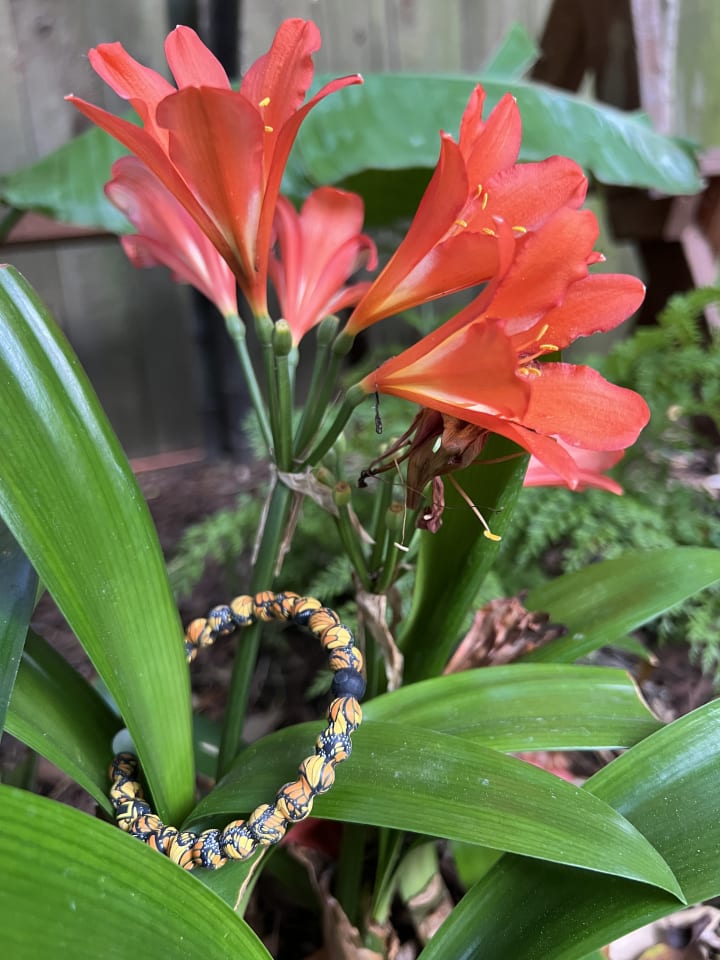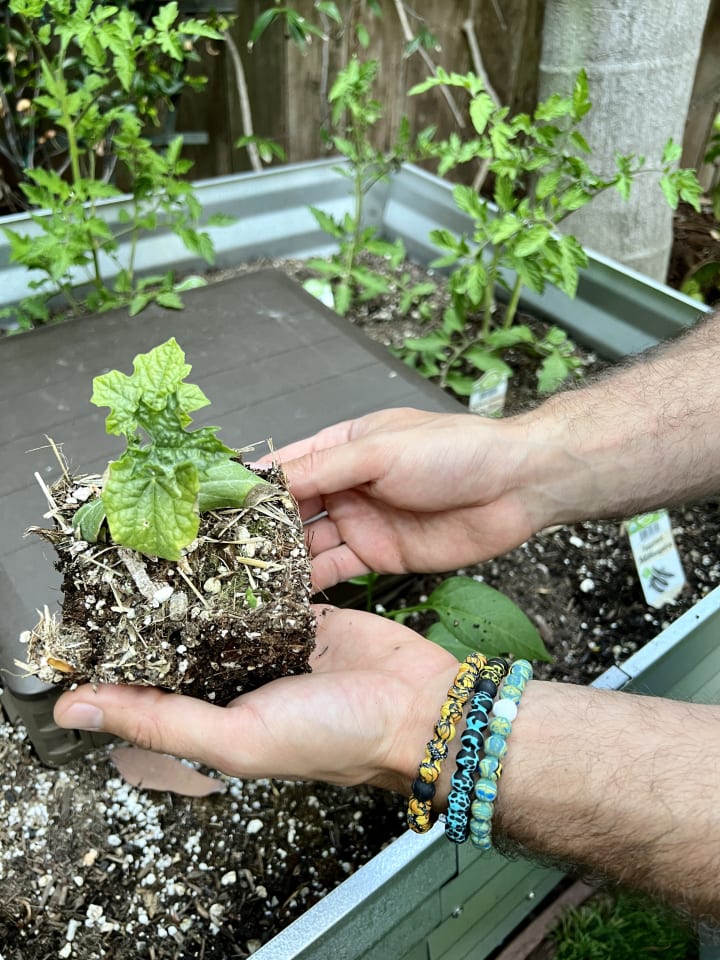An Urban Farmer’s Plea for Insect Pollinator Conservation
Bees get all the credit, but there are other insect pollinators like butterflies and beetles that are essential, too. Here’s how you can help keep them safe and productive for the health of your garden and the earth.

Bees get all the credit. Don’t get me wrong. I love bees (and so do my plants). But there’s a bigger picture — one my plants understand more than anyone. We have to recognize all the other insect pollinators out there, too.
If it wasn’t for monarch butterflies, beetles, moths, and others like them, city horticulturists like me would be hard-pressed to make any significant difference in improving the sustainability of city landscapes. Because of this, I want to shine a light on some of these lesser-known insect pollinators to help create an environment that allows them (and, of course, our plants and gardens) to thrive. This is my plea for pollinator protection. Let’s take a closer look.
Insect Pollinators Other Than Bees
When most people think about pollination, they think of bees. While bees are essential pollinators, their busy-bee services only provide about half of all pollination services for plants. Other vital pollinators include beetles, flies, butterflies, moths, wasps, and ants. It’s not just insects, either. Birds and bats are also important pollinators that are crucial to our food system.
In fact, all of these pollinator species are important because some visit different parts of a plant, improving the quantity or quality of pollination, while others are more efficient in transferring pollen. Some can carry pollen further distances or travel in conditions when bees are unable to forage.

As an urban gardener and conservationist, it’s important to recognize that all of this is important — and while bees can help, they’re not the only ones pulling their weight in the plant world.
Insect Pollinator Conservation: 6 Ways You Can Help
Now that you see bees are in good company, here are a few ways you can support other insect pollinators in your neighborhood.
1. Support the Monarch Butterflies
Monarch butterflies are extremely important pollinators. While some people can fill their backyards with things like native milkweed and other nectar plants, that’s not always possible for urban gardeners like me.
One easy way to support insects (the real MVPs in urban farming) is by purchasing a National Geographic Monarch Butterfly Lokai. I have one, and I like to use it as a constant reminder to be mindful in my purchases and life choices. Plus, I love the way it looks — and so does everyone else apparently, as I’m asked about it surprisingly often. I like to use it as a conversation starter to spread awareness about monarch butterflies and insect conservation!
The proceeds from this bracelet support wildlife conservation and the conservation of other insects that are vital to our ecosystem. As a nonprofit, National Geographic works hard to protect and illuminate our world through exploration, research, and education — work that protects animals, insects (like the Monarch), and their natural habitats. I’m proud to support them on our collective mission for a more inhabitable planet.

2. Grow Native Plants
Even if you’re growing in containers, you can plant a few native plants. These form the foundation of habitat for pollinators, giving them the nectar and pollen they need for food as well as protection from the weather and predators.
I encourage everyone to fill their backyards with native plants. Here in southern California, I’m talking about things like beardtongue, California poppies, and prickly pear — but it really depends on where you live. Do some research to find out which plants are native to your area so you can give the local pollinators exactly what they need. Don’t forget to be mindful of invasive species. Cater to the locals, and keep an eye out for plants that don’t belong in your garden/yard. For more on how to prevent the spreading of invasive species, check out this resource from The Nature Conservancy.
If you can, choose a mixture of plants and don't rely on just one kind of plant for your landscape. A variety of plants, with different shapes, scents, flower colors, and styles will attract a wider variety of pollinators so it’s not all bees or all butterflies who are coming to your balcony or patio.

3. Stop Using Pesticides
For the love of God, if you’re still using pesticides on your plants, please stop. These chemicals kill the insect pests you don’t want, sure, and they’re highly effective at doing so. However, they are also highly effective at killing the insects you do want — you know, the bees, butterflies, beetles, and other pollinators.
There are plenty of organic ways you can maintain your garden, like traps and barriers for example. Depending on the pest I’m trying to sway, I’ll either use pheromone traps (which use attractants produced by an organism to manipulate the behavior of other members of the same species) or sticky traps (which catch crawling or flying pests in areas they most often travel). If you’ve tried barriers in the past to no avail, try using a screen. Screens let all the good stuff in while deterring even the smallest of pests from your garden. Try out these two non-pesticidal methods to stop relying on expensive and heavily damaging products.
If you absolutely must use a pesticide, choose the least toxic product possible. Apply at night, which is when most pollinators (like bees and butterflies) are not active. This can minimize damage. But to reiterate, when given the choice, no pesticides is the best option.
4. Accept Some Plant Damage
If you’ve noticed some damage to your plants, don’t freak out. Sometimes, this damage provides a valuable habitat for moth and butterfly larvae. You don’t need to prune it back or remove it.
5. Plant in Clumps
Again, planting a variety of plants, those that bloom from early spring to late fall (or year-round, if you're lucky enough to live in such a climate) is your best bet. You can even grow plants that bloom at night, which will attract moths and bats (not an insect, but still an important pollinator).
When you’re planting, consider growing in clumps, with plants grown densely together in a single section. This is instead of spreading them out and having a more sparse-looking display. This will not only help any garden or terrace to look great, but will also make it easier for pollinators to find the plants they want and need to eat.

6. Put Out Some Fresh, Clean Water
Pollinators need plants, but they also need water. They can often find this in rural environments, but in cities, water can be more scarce (especially in hot, dry cities, like in LA).
The simple solution?
Put out a shallow dish of water with half-submerged stones. The insects can perch on the stones and satiate their thirst before going back to your plants.

Protect Pollinators Everywhere
Pollinating insects are essential, both for our natural landscapes and for our food supply. Without them, life as we know it would cease to exist. The steps I’ve described above are small ones; but believe it or not, they can make a huge difference. Give them a try today and do your part to help the pint-sized heroes in your own backyard.
And lastly, be conscious of the brands you're buying from and seek out the ones that give back to vital causes, like National Geographic. I like Lokai and Nat Geo because like them, I also believe in using fashion and trends to inspire people to care about animals and their ecosystems. This is powerful, especially when proceeds from each purchase go toward real conservation work through National Geographic. I urge you to join me in designing a better future with the brands that actually care about our planet instead of just a profit.
About the Creator
Farmer Nick
Nick Cutsumpas
@farmernick on Instagram
Plant Coach + Urban Farmer 🌱 LA | NYC📍
Plants = regenerative stepping stones 🌍
Reader insights
Outstanding
Excellent work. Looking forward to reading more!
Top insights
Eye opening
Niche topic & fresh perspectives
Excellent storytelling
Original narrative & well developed characters
Expert insights and opinions
Arguments were carefully researched and presented
Heartfelt and relatable
The story invoked strong personal emotions
Masterful proofreading
Zero grammar & spelling mistakes
Compelling and original writing
Creative use of language & vocab
On-point and relevant
Writing reflected the title & theme
Easy to read and follow
Well-structured & engaging content








Comments
There are no comments for this story
Be the first to respond and start the conversation.